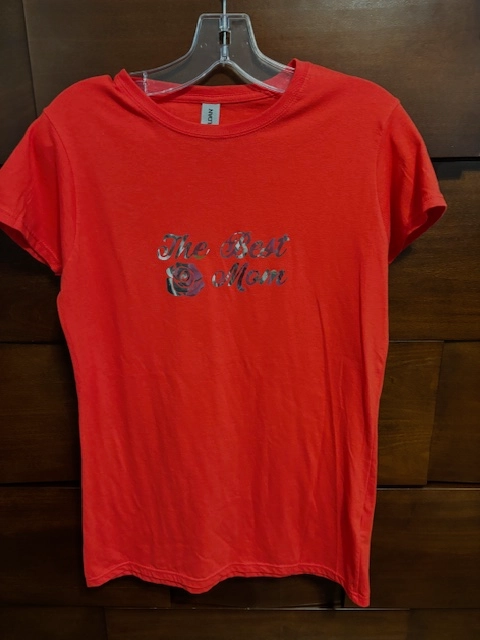The Art of Custom Embroidery: Unlocking the Secrets to Creating Unique and Unforgettable Designs
The tricks to creating personalized embroidery styles that captivate the eye and leave a long lasting perception lie in a fragile equilibrium of technique, creative thinking, and interest to detail. As we delve right into the world of custom embroidery, we uncover the nuanced interplay between thread option, sew intricacy, and layout personalization that boosts a mere garment to a job of art.
Selecting the Right Embroidery Threads
When picking embroidery strings, what crucial variables should you think about to make sure the most effective results for your customized layouts? The selection of embroidery thread is essential in figuring out the last result of your embroidered style. Among the main factors to consider is the product of the string. Various products such as cotton, polyester, rayon, and silk supply differing degrees of shine, resilience, and appearance. It is important to select a thread product that matches the textile you are embroidering on and lines up with the desired look of the design.
Moreover, the weight or thickness of the string plays a substantial duty in the look of the needlework. Thicker threads can add dimension and appearance to your style, while finer strings are ideal for intricate details and tiny text. In addition, considering the shade fastness and washability of the thread is crucial to make certain that your personalized designs maintain their top quality and vibrancy with time. By very carefully reviewing these variables and selecting high-quality strings that satisfy your specific needs, you can enhance the visual charm and longevity of your stitched creations.
Exploring Different Stitch Techniques
To delve right into the realm of 'Exploring Different Stitch Methods', one must grasp the details and subtleties that each stitching technique brings to the art of needlework. Various stitch strategies not just add visual rate of interest yet additionally add to the total structure and dimension of the layout. One popular stitch method is the satin stitch, which involves very closely stuffed parallel stitches to develop a smooth and shiny surface, suitable for loading in shapes and producing strong outlines.
On the various other hand, the backstitch is a versatile method frequently made use of for laying out and including great details. It involves sewing backward to develop a solid line of embroidery. In addition, the French knot stitch adds a tactile component to designs, perfect for producing textured accents like blossom facilities or ornamental touches.
Exploring different stitch methods permits embroiderers to play with light, darkness, and deepness within their designs, raising the visual charm and artistic quality of their continue reading this embroidery tasks. By understanding numerous sewing methods, one can open endless opportunities for creating unique and memorable personalized needlework items.
Incorporating Personalized Style Components
Having actually explored the details of different stitch strategies such as the satin stitch, backstitch, and French knot, the focus now changes towards incorporating customized layout aspects in custom needlework projects. Individualized layout aspects play a critical role in making embroidery tasks truly special and remarkable. One method to integrate personalization is by adding initials, names, or substantial days to the design. This not only adds a personalized touch however additionally improves the nostalgic value of the embroidery piece.
Another means to incorporate tailored design aspects is by consisting of symbols or themes that hold unique meaning to the recipient or show their rate of interests and personality. For instance, including a favored flower, pet, or hobby-related sign can make the needlework design a lot more meaningful and customized. Furthermore, choosing colors that resonate with the recipient or straighten with the designated style can further enhance the personalization of the needlework task.
Grasping the Art of Shade Coordination
One trick element of shade control is comprehending color concept. why not try here This includes understanding just how various shades communicate with each other, the emotions they convey, womens tailored suits and exactly how they can be incorporated to create aesthetically attractive layouts. By using color theory principles, embroiderers can create unified color palettes that boost the total appearance of the design.
In addition, focusing on comparison is crucial in shade coordination. Making use of contrasting colors can help specific elements of the design pop, boost readability, and develop a visually vibrant needlework item. By understanding the art of shade coordination, embroiderers can raise their styles and create remarkable pieces that reverberate with clients and customers alike.
Enhancing Appearance With Advanced Needlework Stitches

French knots, for example, are best for adding small, raised dots to your style, resembling the appearance of beads or creating a distinctive surface area. Bullion knots, on the other hand, can be used to create twisted, ropelike aspects that add a glamorous feel to the embroidery. Seed stitching involves little, scattered stitches that can fill out areas with a multicolor structure, while turkey work produces fluffy, dimensional accents evocative pet fur or foliage. Experimenting with these sophisticated embroidery stitches permits you to push the limits of conventional embroidery and develop truly unique and aesthetically appealing appearances in your designs.
Final Thought
Finally, the art of customized embroidery involves a combination of selecting the right strings, exploring various stitch techniques, including customized design components, mastering shade sychronisation, and boosting structure with advanced stitches. By comprehending and applying these essential aspects, embroiderers can develop special and remarkable designs that display their imagination and skill. Needlework fanatics can unlock the secrets to developing lovely and bespoke items that attract attention and leave a lasting impression.
Comments on “Stylish Monogramming on Towels for a Touch of Deluxe”